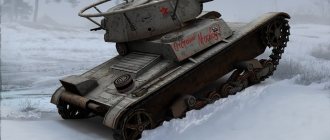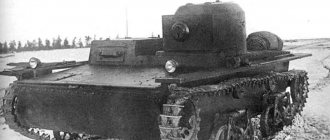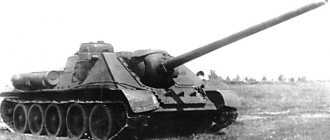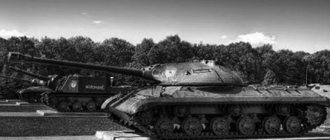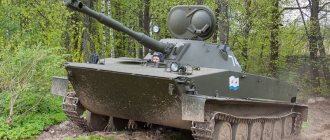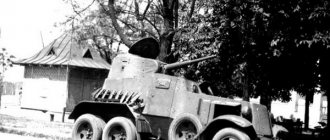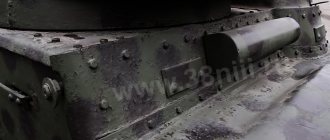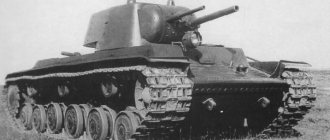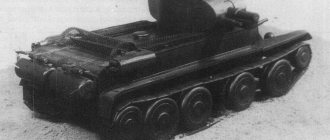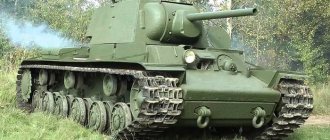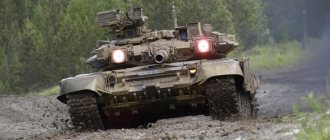| : Incorrect or missing image | This article lacks links to sources of information. Information must be verifiable, otherwise it may be questioned and deleted. You may edit this article to include links to authoritative sources. This mark is set January 26, 2015 . |
K:Wikipedia:Articles without sources (type: not specified)
| T-60 | |
| Airplane diagram. | |
| Type | bomber |
| Developer | Sukhoi Design Bureau |
| Chief designer | N. S. Chernyakov |
| Status | the project is closed |
T-60 (aircraft)T-60 (aircraft)
T-60 (T-60S)
- a project of a Soviet medium-range supersonic bomber, a deep modernization of the Su-24. The exact technical characteristics are unknown, but it is believed that it is an aircraft with variable wing geometry, a flat fuselage and two engines with thrust vectoring; weapons include up to 6 cruise missiles Kh-101, Kh-55 and Kh-15, free-fall bombs, precision-guided ammunition. The project was initiated by the Sukhoi Design Bureau in 1984, but it was canceled after the end of the Cold War in the early 1990s. The bomber was supposed to replace the Soviet Su-24 in the USSR Air Force.
Design
Many details were to be borrowed from the T-4 aircraft and its modifications; the innovations that were supposed to be introduced included several controversial decisions: retracting the wing consoles under the fuselage (without taking into account its real deformations), the use of an engine with a variable bypass ratio based on the so-called “ two-pipe engine. It was because of this that technical work on the aircraft was delayed, although it continued until the end of the existence of the USSR. It was planned to put the aircraft into service by 2003. Other facts about the T-60 are unknown to this day. Analysts also suggest that the aircraft was developed using stealth technology and was created more for high-speed high-altitude flight.
Weapons (estimated)
Up to 6-8 cruise missiles Kh-55 (Kh-55MS, Kh-65), Kh-101, aeroballistic missiles Kh-15 (Kh-15P), up to 20 tons of bomb load, small-sized Kh-41 missiles placed on multi-position launchers drum-type installations MKU6-172.
Performance characteristics (calculated)
Source[1]
- Crew:
n/a - Length:
40 (38) - Wingspan:
24 m (x=70 deg)/37 m (x=30 deg) - Height:
10 m - Wing area:
n/a - Empty weight:
32000 kg - Normal take-off weight:
85000 kg - Maximum take-off weight:
n/a - Engines:
2 × DTRDF n/a
Maximum thrust:
2 × n/a - Afterburner thrust:
2 × 23500 kgf
Flight characteristics (calculated)
- Maximum speed at altitude:
=2,04 - Cruising speed:
=2,02 - Maximum range without refueling:
n/a - Practical range without refueling:
6000 km - Combat radius:
2200 km - Flight duration:
n/a - Service ceiling:
20,000 m
Baptism of fire
The first mass use of the T-60 dates back to the Battle of Moscow. They were available in almost all tank brigades and individual tank battalions defending the capital. On November 7, 1941, 48 T-60s from the 33rd Tank Brigade took part in the parade on Red Square. These were Moscow-made tanks; Gorky's T-60s first entered battle near Moscow only on December 13th.
T-60s began arriving on the Leningrad Front in the spring of 1942, when 60 vehicles with crews were allocated to form the 61st Tank Brigade. The story of their delivery to the besieged city is not without interest. They decided to transport the tanks on barges with coal. It was good from a camouflage point of view. The barges carried fuel to Leningrad, became familiar to the enemy, and not every time they were actively hunted. In addition, coal as ballast provided river vessels with the necessary stability.
Combat vehicles were loaded from the pier above the Volkhov hydroelectric power station. Log decks were laid on top of the coal, tanks were placed on them, and the barges set sail from the shore. Enemy aircraft were never able to detect the movement of our military unit.
The baptism of fire of the 61st Tank Brigade occurred on January 12, 1943 - the first day of the operation to break the siege of Leningrad. Moreover, the brigade, like the 86th and 118th tank battalions, which were also armed with light tanks, operated in the first echelon of the 67th Army and crossed the Neva across the ice. Units equipped with medium and heavy tanks were brought into battle only on the second day of the offensive, after a bridgehead two to three kilometers deep had been captured and sappers had strengthened the ice.
T-60s also fought on the Southern Front, especially actively in the spring of 1942 in the Crimea, and participated in the Kharkov operation and in the defense of Stalingrad. T-60s made up a significant part of the combat vehicles of the 1st Tank Corps (commanded by Major General M.E. Katukov), together with other formations of the Bryansk Front, which repelled the German offensive in the Voronezh direction in the summer of 1942.
By the start of the counter-offensive of the Stalingrad, Don and Southwestern fronts on November 19, 1942, quite a few combat vehicles of this type remained in the tank brigades. Insufficiently armored and poorly armed, the T-60 had very low stability on the battlefield, becoming easy prey for enemy medium and heavy tanks. In fairness, it must be admitted that the tankers were not particularly fond of these lightly armored and lightly armed vehicles with fire-hazardous gasoline engines, calling them BM-2 - a mass grave for two.
The last major operation in which T-60s were used was the lifting of the siege of Leningrad in January 1944. Thus, among the 88 vehicles of the 1st Tank Brigade of the Leningrad Front there were 21 T-60s, in the 220th Tank Brigade there were 18, and in the 124th Tank Regiment of the Volkhov Front, by the start of the operation on January 16, 1944, only 10 were available combat vehicles: two T-34, two T-70, five T-60 and even one T-40.
On the basis of the T-60, the BM-8-24 rocket launcher was produced (1941), and prototypes of a tank with a 37 mm ZIS-19 gun, a 37 mm anti-aircraft self-propelled gun (1942), and a 76.2 mm a self-propelled artillery mount, a T-60-3 anti-aircraft tank with two twin 12.7-mm DShK machine guns (1942) and an OSU-76 self-propelled artillery mount (1944). All these vehicles turned out to be not very successful, since the T-60 tank was clearly not suitable for use as a base for self-propelled guns.
Links
Bombers/attack aircraft Su-2 (BB-1) • Su-7 • Su-17/Su-20/Su-22 • Su-24 • Su-25 • Su-25T • Su-39 • Su-34 Educational and sports Su-25UTG • Su-26 • Su-28 • Su-33UB • Su-29 • Su-31 • UTB Experimental ANT-25¹ • ANT-37¹ • P-1 • P-42 • Su-1 • Su-3 • Su-4 (BB-3) • Su-5 • Su-6 • Su-7 (1944) • Su- 8 • Su-9 (1946) • Su-10 • Su-11 (1947) • Su-12 • Su-15 (1949) • Su-17 (1949) • Su-28 • Su-37 • Su-47 « Berkut" • T-4 "Sotka" • ShB (BB-2) Civil Su-38 • Su-80 • Superjet 100 Projects KR-860 • MFP • Su-13 • S-54 • T-60 • Sh-90 (T-12) • SSBJ Notes: ¹ work under the general supervision of A. N. Tupolev
An excerpt characterizing the T-60 (aircraft)
The captain looked at Pierre. He had the habit of stopping in the middle of a conversation and looking intently with laughing, affectionate eyes. – Eh bien, si vous ne m'aviez pas dit que vous etes Russe, j'aurai parie que vous etes Parisien. Vous avez ce je ne sais, quoi, ce... [Well, if you hadn’t told me that you were Russian, I would have bet that you were a Parisian. There is something about you, this...] - and, having said this compliment, he again looked silently. “J'ai ete a Paris, j'y ai passe des annees, [I was in Paris, I spent whole years there,” said Pierre. – Oh ca se voit bien. Paris!.. Un homme qui ne connait pas Paris, est un sauvage. Un Parisien, ca se sent a deux lieux. Paris, s'est Talma, la Duschenois, Potier, la Sorbonne, les boulevards,” and noticing that the conclusion was weaker than the previous one, he hastily added: “Il n'y a qu'un Paris au monde.” Vous avez ete a Paris et vous etes reste Busse. Eh bien, je ne vous en estime pas moins. [Oh, it's obvious. Paris!.. A man who does not know Paris is a savage. You can recognize a Parisian two miles away. Paris is Talma, Duchesnoy, Potier, Sorbonne, boulevards... There is only one Paris in the whole world. You were in Paris and remained Russian. Well, I respect you no less for that.] Under the influence of the wine he drank and after days spent in solitude with his gloomy thoughts, Pierre experienced involuntary pleasure in conversation with this cheerful and good-natured man. – Pour en revenir a vos dames, on les dit bien belles. Quelle fichue idee d'aller s'enterrer dans les steppes, quand l'armee francaise est a Moscou. Quelle chance elles ont manque celles la. Vos moujiks c'est autre chose, mais voua autres gens civilises vous devriez nous connaitre mieux que ca. Nous avons pris Vienne, Berlin, Madrid, Naples, Rome, Varsovie, toutes les capitales du monde... On nous craint, mais on nous aime. Nous sommes bons a connaitre. Et puis l'Empereur! [But let’s return to your ladies: they say that they are very beautiful. What a stupid idea to go and bury yourself in the steppe when the French army is in Moscow! They missed a wonderful opportunity. Your men, I understand, but you - educated people - should have known us better than that. We took Vienna, Berlin, Madrid, Naples, Rome, Warsaw, all the capitals of the world. They fear us, but they love us. It doesn't hurt to know us better. And then the emperor...] - he began, but Pierre interrupted him. “L'Empereur,” Pierre repeated, and his face suddenly acquired a sad and embarrassed expression. – Est ce que l'Empereur?.. [Emperor... What is the emperor?..] – L'Empereur? C'est la generosite, la clemence, la justice, l'ordre, le genie, voila l'Empereur! C'est moi, Ram ball, qui vous le dit. Tel que vous me voyez, j'etais son ennemi il ya encore huit ans. Mon pere a ete comte emigre... Mais il m'a vaincu, cet homme. Il m'a empoigne. Je n'ai pas pu resister au spectacle de grandeur et de gloire dont il couvrait la France. Quand j'ai compris ce qu'il voulait, quand j'ai vu qu'il nous faisait une litiere de lauriers, voyez vous, je me suis dit: voila un souverain, et je me suis donne a lui. Eh voila! Oh, oui, mon cher, c'est le plus grand homme des siecles passes et a venir. [Emperor? This is generosity, mercy, justice, order, genius - this is what an emperor is! It is I, Rambal, telling you. The way you see me, I was his enemy eight years ago. My father was a count and an emigrant. But he defeated me, this man. He took possession of me. I could not resist the spectacle of grandeur and glory with which he covered France. When I understood what he wanted, when I saw that he was preparing a bed of laurels for us, I said to myself: here is the sovereign, and I surrendered myself to him. And so! Oh yes, my dear, this is the greatest man of past and future centuries.]
Onwards and upwards: beyond the sixth generation of fighters
Defense News, actually a colleague of Military Review, interrogated the head of the US Air Command, General Mark Kelly, for information about how work is progressing to create the next generation fighter from the NGAD program.
In many opinions the aircraft is called the sixth generation. Now it turns out that this is not just an airplane, but also a complex of unmanned aerial vehicles, spacecraft and some cyber platforms. With the latter, everything is completely unclear.
So, NGAD, Next Generation Air Dominance or “New Generation Air Superiority.” On the one hand, everyone understands perfectly well that this is another black hole into which budget money will fly, on the other, the Americans, represented by Kelly, claim that the program has advanced further than many expected, and the full-size NGAD demonstrator has already made its first flight.
Next we have one question that I think a lot of people will like and a lot of people will be surprised by.
Yes, the United States has developed a “system of systems,” as they call it themselves. More precisely, these are several families united by one task and combined into a single combat system under a single control.
Fighters, drones, satellites in space, cyber platforms. The latter need to be dealt with separately, but with the rest everything is more or less clear.
According to the concept, fighters supported by drones will be able to penetrate even into A2/AD - Anti-Access/Area-Denial areas, high-risk zones into which NATO troops cannot penetrate without unacceptable damage even with superior forces, breaking through any air defense systems, destroying aircraft and the most important enemy targets.
I won’t be far from the truth when I say that there are only two such zones in the world: China and Russia. It is in this order, because in itself an open clash between the United States and the Russian Federation is not possible, if only because there are no compelling reasons for this. Russia has nothing that could bring the United States to an open attack.
But China, which in the United States is already openly called the main rival, and which has concentrated on its territory a huge number of industrial enterprises owned by owners from the United States, among others. Apple, Boeing, Qualcomm, General Electric - it will be very difficult for these companies to abandon the Chinese industrial platform.
So if anyone has a chance of being “forced to obey,” it is China, which is increasingly demonstrating its independence in terms of its political and economic course.
Will the US Air Force be able to penetrate Chinese airspace today? I will refer to the same “Defense News”, which wrote in April of this year that using the fifth-generation fighter F-35A Lightning II it will be very, very difficult to do this due to many factors, many of which we have discussed more than once.
Defense News notes that this is precisely the task that the aircraft being created under the NGAD program can perform. At least the word “should” sounded like it. And the F-35A will be left to confront Chinese aircraft and cruise missiles, protecting American military installations from attacks.
That is, according to the American military, the newest F-35 today is no longer suitable for carrying out missions against developed countries with a decent air defense and air force structure. Meanwhile, the F-35 is supposedly a fifth-generation fighter. And - it is either outdated or has not reached the level of solving such problems as combat operations in the A2/AD zone.
Sixth generation?
Okay, sixth. Which is being developed in many countries, not only in the USA. England, China, Germany, France, Russia are all working on their next generation projects. Despite the fact that the fifth has not yet been completed. In reality, not a single country that has the latest generation fighters can confidently say today that all issues regarding its aircraft have been removed from the agenda.
But nevertheless, everyone rushed to create the next generation.
The question arises: what is it about the next, sixth generation, how will it differ from the fifth?
Today, the fifth generation of fighters flies at conditions close to the maximum. For the person in the airplane cabin. And, despite the help of computers, a modern pilot has to operate with a huge amount of information, control dozens of parameters in flight, and do all this in shorter periods of time.
In fact, designers have been talking about artificial intelligence for a long time. Yes, AI is not yet developed as much as the human brain, but it doesn’t matter whether it’s 10g or 20g. Missiles already maneuver with overloads of up to 20g, and the Germans claim that their newest IRIS-T missile can withstand 60g.
It turns out that the basic difference between the sixth generation and the fifth in terms of “higher, further and faster” is the absence of a pilot in the cockpit. Or the optional presence of a person on the plane.
But then, isn’t it easier to make drones that already exist and that do not require life support systems and human rescue in the design.
And then - please, that same hypersonic speed, which seems to be also a mandatory property of 6th generation machines. Absolute invisibility cannot be achieved, this is understandable. But a person in an airplane flying at a speed of 5-6 Mach also looks only theoretical.
Here NGAD looks more or less intelligible. Especially if we consider the “system of systems” as a kind of “swarm”. That is, a flock of unmanned vehicles, for different purposes, working as one. A gang of flying Terminators. Some carry missiles, some carry bombs, some carry electronic warfare modules, some carry communications equipment, and some carry a container with an artificial brain that will control it all.
And at some distance - a couple of planes with people. With a backup control channel in case the artificial brain catches the rocket in its convolutions.
But this is how modern anti-ship or cruise missiles already operate. They fly in a flock, replace the leader if he is shot down, lead others to the target, and so on.
But those are rockets. Planes are not so fast, not so stealthy. They really should be at the next level of technology.
Today, if you look at the fighter of the Penetrating Counter Air (FX/PCA) program, it must be able to fight enemy fighters, gaining air superiority, accompany bombers, and destroy targets of various types on the ground. Fly long distances, be able to refuel in the air, carry many different missiles and bombs and be as invisible as possible to radar.
Are there any differences from the same F-35 or Su-57 of the previous generation? That's it.
But other developers don’t claim anything revolutionary either. Yes, they promise better performance for sixth-generation aircraft, but no one is talking about anything revolutionary or fundamentally new in equipment.
Yes, the “flying wing” is the only “news”. And also not one of the newest, this concept of aircraft from World War II is in action.
So all this talk about the sixth generation will not soon go beyond talk. Apparently, the number “6” in the reports looks more interesting and (most importantly) more expensive than “5”. Or "5+". Or "5++". And I really want to sell this topic at a higher price, just as not so long ago the British tried to pass off their new “Tempest” as a “6”. Although he hasn’t flown as a “five” yet.
In general, the sixth generation, which has only unmanned control and hypersound among its main qualities, is a weak step forward compared to the fifth generation. This is simply an increase in the size and capabilities of existing UAVs, nothing more.
Apparently, the demonstration model that took off in the USA is, yes, “one small step.” But for it to become a real step for the Air Force of a single country, a lot more time needs to be spent. And many billions.
Perhaps then the fairy tale about the sixth generation will begin to become reality.
